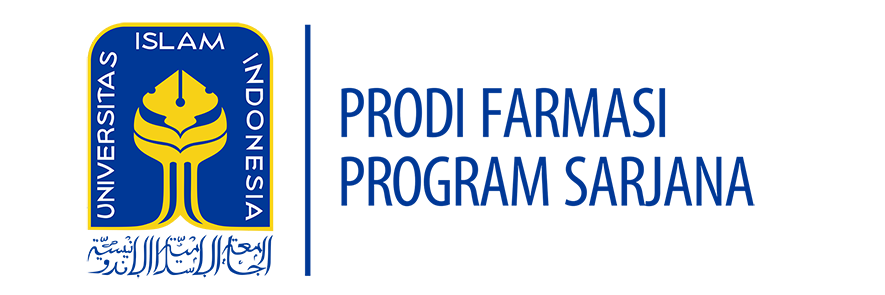| Module Name |
Basic Pharmaceutical Chemistry |
| Module level, if applicable |
1st year |
| Code, if applicable |
SFA-107 |
| Semester (s) in which the module is taught |
First semester |
| Person responsible for the module |
apt. Ari Wibowo, M. Sc. |
| Lecturer(s) |
apt. Ari Wibowo, M. Sc. |
| Language |
English- Indonesia |
| Relation to curriculum |
Compulsory course |
| Types of teaching and learning |
Class size |
Attendance time (hours per week per semester) |
Forms of active participation |
Workload |
|
| Teaching |
50 |
2 |
Collaborative discussion |
Lecture: 2 (hour) x 14 (meeting) |
28 |
| Discussion |
Presentation |
Preparation and follow up 4 (hour) x 14 (self-learning) |
56 |
| Total workload |
84 h |
| Credit points |
2 CU |
| Requirements according to examination regulations |
Minimum attendance at lectures is 75% (according to UII regulation). Final score is evaluated based on assignment and reports (50%) and exam (50%) |
| Recommended prerequisites |
– |
| Related course |
– |
| Module objectives/intended learning |
By the end of this course students should be able to:
- play an active role and apply discipline in the lecture process.
- explain the application of basic chemistry in pharmacy.
- understand the concept of stoichiometry in the pharmaceutical field.
- understand the concept of acid-base and reduction-oxidation reactions in the pharmaceutical field.
- understand the concept of reaction kinetics and the colligative properties of solutions in the pharmaceutical field.
|
| Content |
The course will cover:
- The physicochemical properties of medicinal compounds
- Stoichiometry, acid-base reactions, reduction-oxidation reactions, kinetics reaction, and the colligative nature of solutions.
|
| Study and examination requirements and forms of examination |
Mid-term, Final term, presentation, quiz, assignment, and collaborative discussion |
| Media employed |
Text books, slides (power points), and video |
| Reading lists |
- Cairns, D., 2008, Essentials Pharmaceutical Chemistry 3rd edition, Pharmaceutical Press, London.
- Harris, D. C., 2010, Quantitative Chemical Analysis Eighth Edition, W. H. Freeman and Company, New York.
- Reddy I. K., dan Khan M. A., 2004, Essential Math and Calculation for Pharmacy technicians, CRC Press, Boca Raton, Florida.
- Timberlake, K.C., 2015, Chemistry, An Introduction to General, Organic, and Biological Chemistry, 12th edition, Pearson Education Inc., USA.
- Sarker S.D., dan Nahar L., 2007, Chemistry for Pharmacy Students, John Wiley & Sons, Ltd., England.
- Beale J. M., Jr., dan Block J. H., 2011, Wilson and Gisvold’s Textbook of Organic Medicinal and Pharmaceutical Chemistry, twelfth edition, Lippincott Williams & Wilkins, Philadelphia
|
